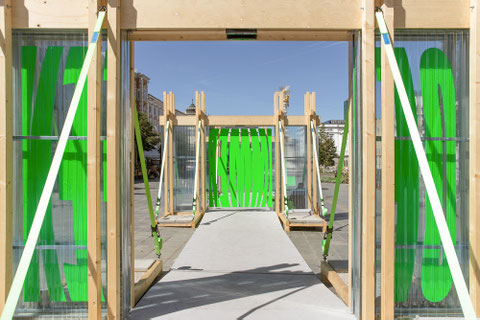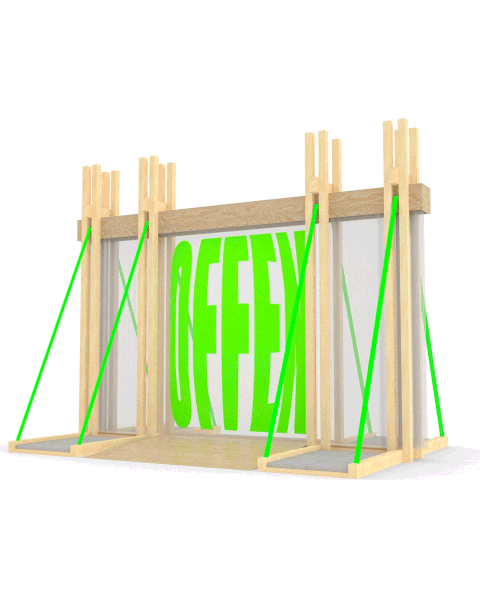Alles. Immer. Offen
Soundinstallation on the main square of Linz for the Kunstuni Campus @Ars Electronica Festival
Installation made of three automatic sliding doors on the main square of Linz
02.09.-07.09.2025

Sliding doors on the main square. Constantly opening. And closing. And opening. The world resides between doorways. And next to them.
The University of Arts Linz is once again staging a curatorial intervention on the Hauptplatz, Linz’s main square, during the Ars Electronica Festival—in addition to the exhibitions, the Sound Campus, and the discursive and performative presentations. Sensor-activated sliding glass doors usually go unnoticed in shopping malls, hospitals, or other public buildings. As part of the Ars Electronica Festival, these overlooked structures are put in the spotlight on Linz’s Hauptplatz. The University of Arts Linz responds to this year’s theme, PANIC – yes/no, through the concept of automated openings—exhibiting the space between doors: from entrance to passage to exit. Our relationship to the world is challenged by an unceasing, automated absurdity. With every sensor-driven opening, glass doors begin to speak to the Linz public through unexpected sounds.
Alles.Immer.Offen. [Everything. Always. Open.] as hope, promise, uncertainty or threat? Are we becoming increasingly reluctant to accept moments of openness? What exactly are we afraid of—and why? What lies behind, between, or beside doorways? And what promises come with doors that open on their own? The sound and noise installation on Linz’s Hauptplatz explores the theme of openness. We are not aiming to convey insights or deliver knowledge. Instead, we invite people to think for themselves—to spark conversations among thinkers. We want to create a space within public space. A space that opens—and is meant to open again and again.

The architectural setting of the installation exaggerates the silhouette of the door and makes the act of passing through it a conscious experience. The floor follows a slight wave motion that rises immediately in front of each door as soon as visitors step into the sensor's detection area. This rise reinforces the feeling of transition and gives the moment an additional spatial dimension, while at the same time creating barrier-free use of the installation.
The construction is designed for transparency and lightness, while at the same time following a clear structural logic and meeting all requirements for use in public spaces. Uncut beams connected by steel bolts are used, ensuring maximum recyclability of the components.
At the end of the exhibition, the doors and their drive systems will be taken back by the manufacturer and integrated into other projects, while the remaining components will return to the workshops of the University of Art. There they will be available for further student projects, workshops, and new projects. Parts of this year's installation already come from previous uses—a principle that has already been tried and tested in earlier projects at the University of Art and Design Linz and enables continuity and sustainability even for large, temporary works.

Idea: Manuela Naveau,
Architecture & project lead: Paul Eis
Structural engineering: Dipl. Ing. Dr. Karlheinz Wagner & Co ZT-KG
Sliding doors: Peter Danereder GmbH
Audio setup: Jürgen Ropp
Production team: Daniel Burgos, Samuel Haas, Max Meindl (Prototype)
Organizational support: Sylvia Leitner, Gudrun Oberndorfer
